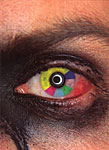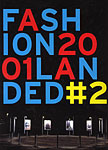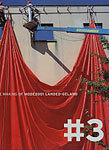|
FASHION2001
LANDED
|
WALTER
VAN BEIRENDONCK Could one say that Chanel is someone who, on the basis of a more or less closed alchemy, guided fashion into modernity, turned it into a sort of programme for life, a fashion, which could be used in all circumstances; and that Kawakubo has interiorized this fashion once again, and rediscovered the alchemy? 'I think that both of them made radical decisions that were very effective at the time and elicited a great response in the fashion world. Chanel reflected her view of fashion in her person, her own lifestyle and even her own body. She herself was the most passionate promoter of her fashion, and that was radically new. One sees the same fanaticism in Comme des Garçons, but from a completely different angle. When Rei Kawakubo presented the Destroy collection in Paris, she forced everyone into a sudden new awareness; there was suddenly a different approach to clothing. At that moment one chapter closed in the fashion world. This is what I mean by impact. If they hadn't made those decisions at the time, many of the fashion statements that followed would simply not have been possible. Chanel freed the body, and in its turn Comme des Garçons provided it with a sort of haven.' This reminds me of Mr Pearl, who wears the corset. Wearing a corset is also liberating, mentally liberating. There are a number of things one no longer has to think about, even if it is simply holding in one's stomach. The corset 'outlines' your body and is absolutely reliable on that score. Gabrielle Chanel liberated the female body, but at the same time recast it as her body. After Chanel, fashion became more of a physical pre- occupation for women than it had been before. Free of all encumbrances, the body was now more or less responsible for its own form. 'Which, if we look back, shows us that fashion is constantly on the move. A garment that gives one a confident feeling today is quite a different matter at another point in time. This is fascinating. However, wearing a corset today is a statement in yet another direction. Either people do this for themselves or it is a type of fetishism. But you still see it here and there in fashion; Pearl has created corsets for a number of designers.' |
I
think the corset is a cultural phenomenon. It has everything and nothing
to do with sexuality in the sense that a study of sexuality can never provide
us with all there is to know about the corset. The fact that for a long
time the corset could survive only in fetishism proves that for many people
it had become, and still is, an asexual item. 'In fashion you constantly find yourself faced with this ambivalence. I find the study of this boundary very interesting. Others regard it as dangerous. Many people never learn about these aspects of fashion and think of fashion as being just labels. People also see what they want to see. At a certain point I present a collection which, after a few minor changes, appears in the shops in a state that is more or less identical to the original. The whole setting and the atmosphere of the show, or of the recording of it, communicate something very explicitly and very clearly. When you remove the clothing from this setting it is still the same clothing. But then you realize that only a few people see or feel what it is the clothes communicate. And I don't mean a T-shirt bearing some inscription or other. Many people do not get the message but buy something anyway because they find it pleasing, or extreme, or because of the colour etc. I think this is fascinating, the fact that I can manipulate people through fashion but then find that the response of the majority is as strange and abstract to me as my story must be to them.' That's the rift between Industry and designer fashion. 'During the 1980s these two worlds were in tune with one another. This is no longer the case. A good idea is now consumed and burnt up far more quickly than before.' There used to be a large group of people who were not interested in fashion, people who were unable to show an interest in it or who had no wish to become interested in it. Could one say that nowadays everyone is fashion-conscious? 'Everyone buys clothes and everyone is confronted with them and is probably fascinated by them. Nevertheless, fashion needs a degree of passion that allows you to become really involved with it and understand it. I think we have reached that stage now. Designer fashion requires effort. That is why it is such a small world.' -> next |
|||
|
|


